Chris Raines: Hey, welcome to the Dodgeball Marketing podcast and video podcast. This is episode number [crosstalk 00:00:08] 15.
Michael Utley: Yep.
Chris Raines: We're 15 in.
Michael Utley: One-Fiver.
Chris Raines: My name is Chris, this guy's Michael.
Michael Utley: Hey.
Chris Raines: How you doing?
Michael Utley: Good, good. Happy Friday.
Chris Raines: Let's talk about healthcare marketing.
Michael Utley: Yes. And in particular, we're going to talk about the gaps in patient acquisition.
Chris Raines: Ooh, the gaps.
Michael Utley: Yeah, we do a lot of patient acquisition marketing. And so, we've been identifying over the last few years, a real shift toward. . . Well, why don't you talk about it? A more consumer mindset.
Chris Raines: Yeah. It's really that the consumerization or the Amazonification of healthcare.
Michael Utley: The add-to-cartification of healthcare services.
Chris Raines: Yeah. So historically, Michael, people have looked at healthcare as something where you defer to maybe your primary care physician. So, you develop a relationship with your physician and if you need to see, say, a dermatologist or an oncologist or someone like that, you look to your primary care physician and he, or she will tell you where you should go.
Michael Utley: Yeah.
Chris Raines: And then you go there with no questions asked.
Michael Utley: Yeah. And so ...
Chris Raines: And that's more of a referral network. Yeah. It's more of like relying on the high priesthood of the doctor, the MD, to refer you out to where you need to go. And really specialty practices didn't really have to market at all. They didn't have to put their services out there. They didn't have to persuade people because they came in pretty sold. People are more and more not behaving like that. They want to be able to choose their healthcare provider in the same way that they choose something off of Amazon.
Michael Utley: Yeah. And so these days, when someone needs a CT scan or an MRI, often they're getting online and they're making choices. They're even looking for pricing information.
Chris Raines: Yeah. How much does this ... This other one can give me a CT scan for ... Yeah.
Michael Utley: So, of course, it's just a huge shift. And the reason we're talking about this today is a lot of care providers don't have a strong background in say online marketing. They're also generally not marketers. So you might be a practice owner or founder or an office manager or someone who's responsible for taking care of the customers, and not really have a background in marketing. And so we're going to talk a little bit about where we see some of the assumptions that are in place in marketing. And I want to tell a quick story. A few years ago, I was putting together a program. I wanted to sell websites to dentists, and my family was living in Maryland briefly. We had moved up there for a job. And this was before I started Go Apps, and I did a study.
Michael Utley: I created a data set of all the dentists in the state of Maryland, and all their websites. And what I found was on the East Coast, 75% of them had websites, not 100%, 75% of the dentists had websites. The middle of the state, the more populated area along, I guess, 270, about 50%. And in the mountains, only a quarter, 25%. So by head count wise, per capita, it averaged out to about half the dentists in the state of Maryland even had a website eight to 10 years ago. And I was stunned. I thought, wow, this is going to be a great opportunity. I have this website, I have Maryland dentist finder. It's going to be really a local tool for people to find a dentist. And everybody's going to want to be listed on the the dentist finder.
Michael Utley: And I'm going to have my own little niche directory. And any of them who show up and don't have a website, I'm just going to market the websites. And this is great. And so I did a survey and started collecting data. And what I found was that a lot of the dentists and a lot of the frontline workers at the front desk, they had zero interest in gaining new business. It was stunning to me. I had assumed that this was the world of business. It's like, you're running an operation. You've got a building, you got people coming and going. You want more business. I had dentists say things like, we're next to a school. We really couldn't handle more than we're doing right now. I had frontline workers, people who are answering the phones, taking walk-ins, say things like, yeah, we were busy. Please don't come around here. This is not what we want.
Michael Utley: And what it showed me was there's almost an extension of that referral network for healthcare providers that applies to the culture of a lot of healthcare. So, when people are coming in and they're walking in, unless it's an entity with a lot of elective services, like dermatology or any of the elective procedures that have created their own shops and their own networks, they really don't traditionally have the roots of a culture of customer service. So, customer service for them is almost an addition, but it's really not part of the draw of their DNA around how they treat people. And so there's a real clash between the experience people have when they're walking into a lot of healthcare providers in terms of their assumptions, and then the assumptions on the other side of the desk. So, that leaves us with some gaps. There's some gaps and some missed opportunities in patient acquisition.
Chris Raines: Yeah, because of culture. So the biggest gap that I find is once someone takes an action online. So, let's say you're driving traffic to a page and you're asking them to request an appointment or something like that. A lot of times, people will take that action and there's no follow up that happens, or they'll make a call. And the immediate aftermath of that form fill or that phone call is where a lot of the gap is. So, let's talk about ways to fill that gap. And let's talk about reasons for that gap. And you touched on them a minute ago, but a lot of times the people that answer phones, it's someone who's a business manager or a front desk person, receptionist type of person. And usually that person doesn't have a sales customer service ...
Michael Utley: They don't have that background, but they're also not incentivized in any way.
Chris Raines: Right. It's just more work for them. They might [say], we're already busy. Why do I need to deal with this? I've got 10,000 other things to do.
Michael Utley: Yeah.
Chris Raines: So that's the gap we need to fill. We need to make sure that when someone reaches out and says, Hey, I would like an appointment, that somebody answers the phone and somebody gets back to them soon. If they fill out some digital form. So let's talk about ways to fill that gap.
Michael Utley: Yeah. Yeah, yeah. In the South we have a phrase, that dog won't hunt. And what it means is that dog's not motivated. That dog sits on the porch and that's not a hunting dog. That's not a dog who's eager. And so, yeah, these folks who, no fault of their own, they're really set up for failure because for them, calling once and not getting an answer, or calling once and getting a voicemail, leaving a message, checks the box of, did I do my job? And so, yeah, I like the phrase that new patient inquiries die in the phone tree and in the inbox. And so we can actually talk about both of those separately. Yeah, Raines, why don't you talk about how many times is it appropriate today to follow up with a new inquiry?
Chris Raines: I mean, I would say you never know, you never know how motivated the person is. So, just because they fill out a form, doesn't mean they're motivated.
Michael Utley: Yeah.
Chris Raines: So, I would say, at the very least, seven times.
Michael Utley: I was going to go five as a minimum. I think seven is very comfortable.
Chris Raines: Five to seven.
Michael Utley: And that may sound like you're hounding someone, but think about a small business owner who owns a house painting company or something else, or any kind of shop where they're trying to get work in there. They're following up that many times.
Chris Raines: Yeah. And think about terms of motivation again. So let's say it's dermatology and someone see a mole on their skin. So, that might motivate them at that very moment and say, ah, it might be time to get this checked out. And they'll Google something and they'll come to your site. And then they'll see where you can ask for an appointment.
Michael Utley: Yeah.
Chris Raines: And then, maybe they fill something out and maybe nobody gets back to them after two days. Well, that two days might be enough time for all kinds of other things to happen. And they're not as concerned about the mole anymore. They noticed it that one time. So, people's motivation waxes and wanes. So you need to be there to fill that gap, and to give back to them soon. I mean, 10 minutes is what needs to happen. Someone fills out a form, there needs to be someone who gets that notification. It shows up in a way that's notable to them, it automatically bumps it up to important in their email box, and [it's] part of their job. And this might be someone part-time or that you hire, or an external partner that you get a phone call ...
Michael Utley: Yeah, create a call center operation. Yeah.
Chris Raines: And train someone to, if someone fills out a form, they get a call back in 10 minutes.
Michael Utley: Yeah. So setting up a workflow where there's an immediate process is a really different animal than having voicemails queue up in an inbox, and someone's job being to check those once a day. Someone calls in 10:00 AM, they don't really hear back from anybody that day. And the next day, they've already slept on it. They've moved on. They might've even checked in with other providers and gotten somebody who answered the phone. And so, if stuff's going to a voicemail in a phone tree, it can die both in the phone tree experience and in the voicemail. Yeah.
Chris Raines: And for form fills, you can even do things, like tools like Zapier out there. If you're a front desk person whose job it is to call, you can set up text message alerts on your phone. So when someone comes into the form, it zaps over to your text messages and says, new lead, name, and have their number right there, so you can just call them right back from your phone. You can set things like that up, the technology exists to do that. But the point is that very first six hours after they fill out a form or make a call, they're at their peak desire. And because that desire waxes and wanes, you have to capture them in that timeframe.
Michael Utley: Yeah. And then another thing that we've talked about, and this applies not just in healthcare, but we see this a lot. But there seems to be an old, outdated culture, outdated in my opinion, of we don't want to take time with people calling in. We really need to put the work on them to navigate a phone tree, so that it can just go to the right person because that person's time is so precious that we can't risk having them answer a phone and have to forward a call. I think that if you're in the business of bringing people in, you want to take a Chick-fil-A approach and cut out the phone tree.
Chris Raines: Yeah.
Michael Utley: I think it would be worth testing out. Hey, what if you just answer every call that comes in? What if you have somebody associated with this. You could probably do a pretty easy cost benefit analysis. But I think that a lot of phone tree experiences are real negative. What that's really doing, that's really an outdated, gosh, I would even say a 1980s way of making it so that we're almost putting the brakes on customer service and helping people while we're also, at the same time, doing cold calls, trying to get more people in. Well, listen, those people who are calling in, those are your audience. That's your opportunity to help.
Chris Raines: Yeah.
Michael Utley: Let's update our thinking on phone trees and maybe start cutting those out. Let's just start cutting them out. All of our marketing, when we put a phone number out, it goes straight to my phone. I don't even like using the Google voice number.
Chris Raines: Yeah.
Michael Utley: We have one, but I don't like it because it adds that extra little step [crosstalk 00:00:12:29] and I don't like that.
Chris Raines: And you sprint across the room to get it, if it rings.
Michael Utley: Yeah. Yeah, when our phone rings, I answer it. I'm the president of the company. We were not a tiny operation. We exist, but I care and I want people to be able to reach somebody.
Chris Raines: Yeah. Yeah. Let's talk about another thing, too, appointment scheduling online. So, this is another thing that's in terms of the consumerfication of healthcare. Nowadays, when we do business meetings, Michael, when you do meetings, when I do meetings, I never go back and forth anymore with times. It's so tedious to like, does this time work for you? No, that one doesn't work for me. There are services, like Calendly and ScheduleOnce that can look at your calendar, give dates, and people just pick a date and schedule. People are expecting to do that more and more, because it creates so much friction to go back and forth. Like, Hey, we have a slot at Wednesday at three. No, it doesn't work for me. Two o'clock works for on Wednesday, though. Oh, we can't do it Wednesday. What about Thursday at two? This needless back and forth. People expect the convenience of being able to log in and see, here are all the times available for this practice or for these sets of doctors.
Michael Utley: Yeah.
Chris Raines: I know what my schedule is. I want to see where their schedule aligns with my schedule, and then schedule.
Michael Utley: Yeah. When I get a new sales lead in to GoEpps or Dodgeball Marketing, I send my Calendly link out within minutes. And I say, Hey, thanks so much for reaching out. How's one of these times? And you can use tools like Calendly. You can actually set it up and configure it to offer different meeting times. So, if you're in healthcare and you don't want to spend the money for an online scheduling integration, you can use some of these short-term solutions. And just block in time, [crosstalk 00:14:20] for new patient meetings.
Chris Raines: You can say our new patient meeting is from 12 to 12:30 every day.
Michael Utley: Yeah.
Chris Raines: So, we were going to block that off of the main schedule. It's blacked out, make it available.
Michael Utley: Yeah.
Chris Raines: It's only for new leads and most people can pick. If they have seven days, they can pick a 12 or 12:30 to get in. But that's what you have to do.
Michael Utley: Yeah. You don't even have to commit to a five or six figure software integration with one of the healthcare marketing platforms that's sort of an end-to-end solution. You can actually just use one these off the shelf tools. And if it's set up in an elegant way and you think through the process, you can really cut out a lot of the noise and the things that limit people from feeling empowered to use your services.
Chris Raines: Right.
Michael Utley: Yeah.
Chris Raines: So. I think that's all we have to go on this. So bottom line is consumers are behaving towards healthcare more and more of the same way they're behaving towards electronics and other things: the "add to cart" mentality. And so the more you come in to meet the way people want to interact with you, the more you're going to win, the more you're going to create better patients, better patient outcomes and so on. And so closing those gaps is important to that.
Michael Utley: Yeah. And those inquiries can come in by phone. They can come in by email, so you need to make sure you don't have any dead email boxes. They can come in by web form, which are generally going to shoot up to an email. And then more and more in the future, we're going to see those coming in through a social media channel, like Facebook Messenger. And so this is really a problem that we need to solve around consumerism and healthcare, and a more consumeristic approach. And consumerism even sounds bad because everybody's worried about it being price shopped. But let's just think of it as a customer service that's up to the standards of what people are expecting in 2021 and beyond.
Chris Raines: Yeah, because the consumer's not going to change. [crosstalk 00:16:12].
Michael Utley: The market's not going to change, expectations have totally shifted.
Chris Raines: Yeah. All right. Hope that was helpful. If you're a healthcare provider watching this, I hope that was helpful for you in terms of closing the gaps in your own patient acquisition programs.
Michael Utley: Yep. And if you need help, give a shout.
Chris Raines: Yep. See y'all next week.
Michael Utley: Thanks.

 Google Podcasts
Google Podcasts
 Spotify
Spotify
 YouTube
YouTube
 RSS
RSS
 Libsyn
Libsyn
